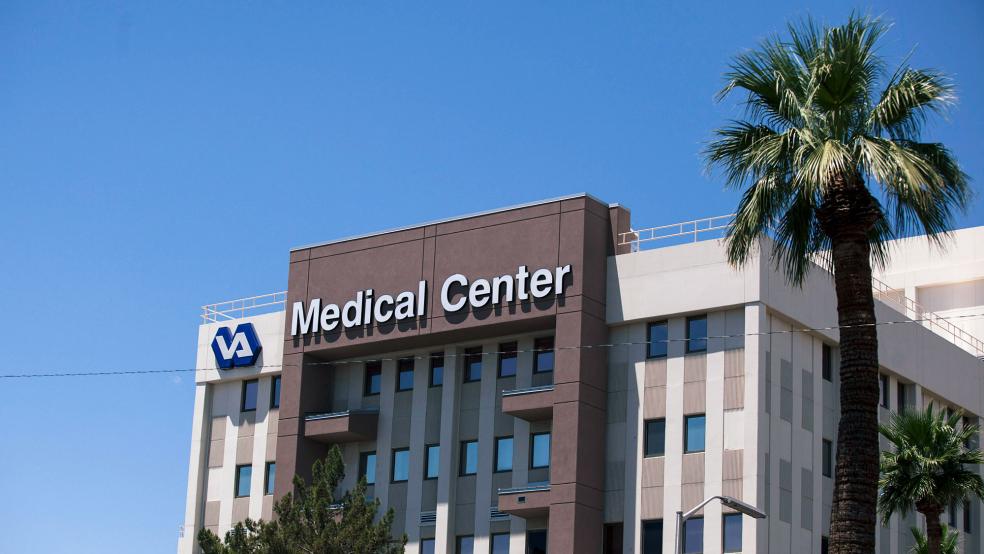It was considered one of the biggest breakthroughs when Congress overhauled the scandal-ridden Department of Veterans Affairs’ medical centers last year. Veterans who have been waiting more than 30 days for an appointment or who live more than 40 miles from a VA facility could use a new “Choice Card” to seek treatment or tests from a private doctor or hospital.
After more than 40 veterans died while waiting to see a doctor or get care at a VA health facility in Phoenix, President Obama and lawmakers vowed that would never happen again.
Related: Veterans Affairs Chief Vows to Operate Like a Business
Yet the bold initiative has turned out to be a bust since its launch last November, as The Washington Post has reported. A mere 27,000 people out of a potential universe of nine million veterans have taken advantage of the new program so far.
Robert McDonald, the new secretary of Veterans Affairs, said on NBC’s Meet the Press this weekend he’s determined to run the vast government agency like a business. He said he has fired more than 900 employees in six short months and that 60 of those workers were removed for manipulating wait times on records from veteran care medical facilities.
Those numbers, however, are coming under new question. They’re less than the pace of VA firings that occurred under his predecessor, Eric Shinseki, according to OPM data showing that 4,300 VA workers were removed or terminated over a two-year span under Shinseki. In addition, the accountability report the VA provides to the House Committee on Veterans’ Affairs weekly says that as of February 5, just eight people have been fired for actions related to scheduling issues, records manipulation, or patient deaths, according to information The Fiscal Times obtained over the weekend. The eight are part of a total of only 69 proposed or completed disciplinary actions. The VA’s report also shows that three additional senior executives have been removed for reasons not connected to wait times or patient scheduling.
McDonald on Sunday did not address the struggling “Choice Card” program, which has drawn fire from veterans’ advocates who say the initiative isn’t working and that hundreds of thousands of veterans still have wait times of a month or longer.
Related: Americans Sour on VA After Health Care Scandal
There is apparently some confusion over how to determine who lives more than 40 miles from a VA facility. Some veterans say the VA is telling them the 40-mile requirement refers to miles in a straight line or “as the crow flies,” rather than driving miles, which are much longer. That makes it far harder for a veteran to show he or she is qualified to seek private care near home.
Moreover, some veterans reportedly are reluctant to take advantage of the new option for seeking private medical care. They fear they’ll have trouble getting reimbursed by the VA for any out-of-pocket payments.
Before the new program took effect, veterans could receive outside care for emergencies, regardless of where the private doctor or facility operated, or for medical procedures not available at a VA facility. But some veterans complained they had to wait many months or even years to be reimbursed by the government for those services, and they fear the same problem would occur under “Choice Card.”
Related: 5 Government Programs That Abuse Taxpayers’ Money
The new program is so underused that President Obama in his fiscal 2016 budget proposed reallocating some of the program’s $10 billion to other purposes. But House Veterans Affairs Committee Chair Jeff Miller (R-FL) rejected that idea as a non-starter, and said that if any money was reallocated, it would go to improve and strengthen the program itself.
During a Veterans Affairs Committee hearing last week, Rep. Tim Huelskamp (R-KS) said the program needs to be totally revamped and made permanent – something McDonald promised to look into. “I just had an email contact from a veteran who drives 340 miles one-way for cardiology,” Huelskamp said. “If the VA Choice Program can’t provide something closer for him, then we need to look at how we’re implementing that.”
Top Reads from The Fiscal Times:






